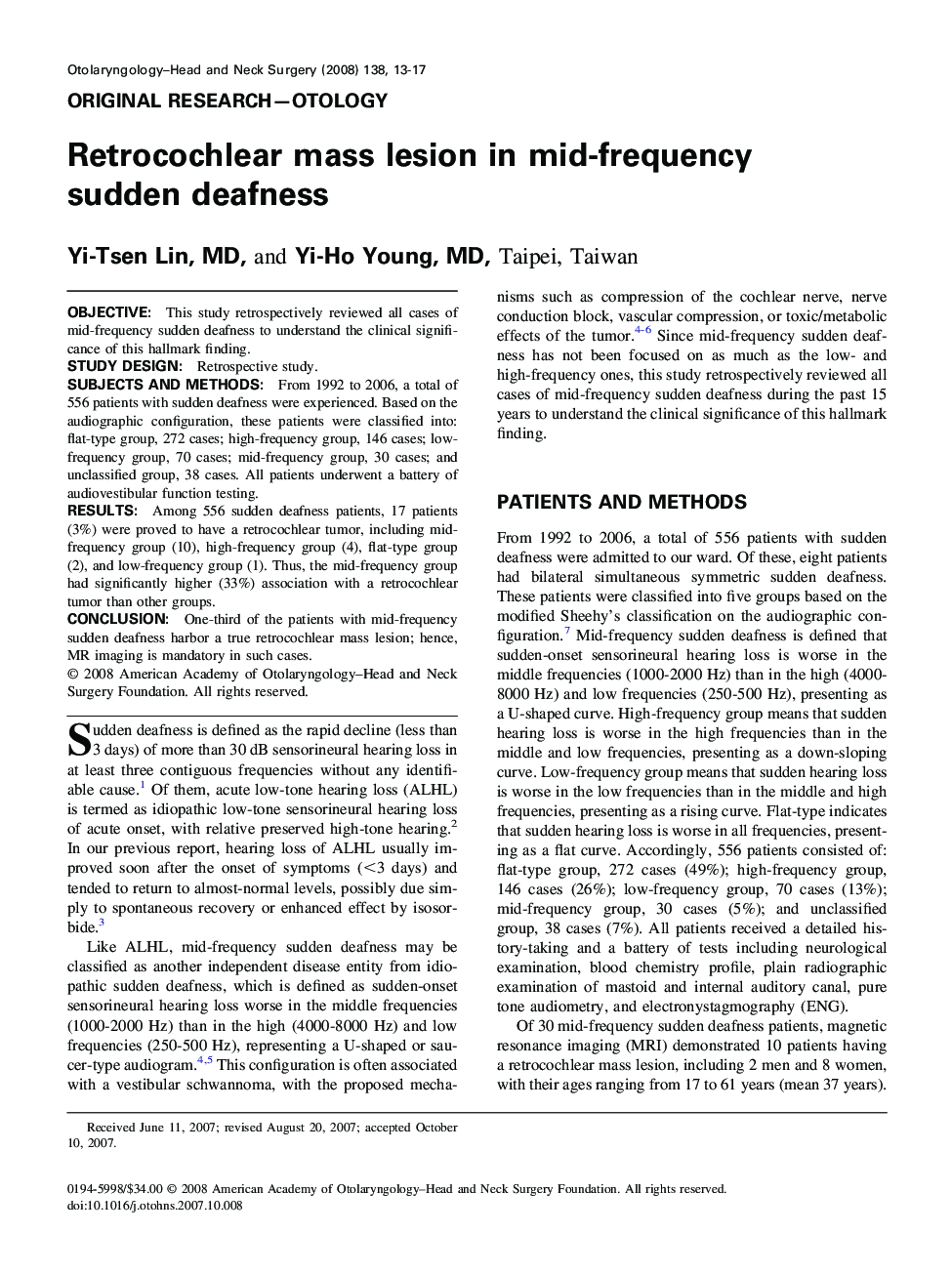| Article ID | Journal | Published Year | Pages | File Type |
|---|---|---|---|---|
| 4126497 | Otolaryngology - Head and Neck Surgery | 2008 | 5 Pages |
ObjectiveThis study retrospectively reviewed all cases of mid-frequency sudden deafness to understand the clinical significance of this hallmark finding.Study DesignRetrospective study.Subjects and MethodsFrom 1992 to 2006, a total of 556 patients with sudden deafness were experienced. Based on the audiographic configuration, these patients were classified into: flat-type group, 272 cases; high-frequency group, 146 cases; low-frequency group, 70 cases; mid-frequency group, 30 cases; and unclassified group, 38 cases. All patients underwent a battery of audiovestibular function testing.ResultsAmong 556 sudden deafness patients, 17 patients (3%) were proved to have a retrocochlear tumor, including mid-frequency group (10), high-frequency group (4), flat-type group (2), and low-frequency group (1). Thus, the mid-frequency group had significantly higher (33%) association with a retrocochlear tumor than other groups.ConclusionOne-third of the patients with mid-frequency sudden deafness harbor a true retrocochlear mass lesion; hence, MR imaging is mandatory in such cases.
